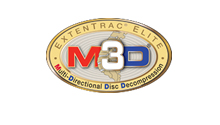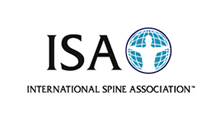
Spinecare Topics
Artificial Disc Relacement
Because of all of the research that is being done there is a growing respect for role of each part of the whole and this include the spine. This is particularly important when considering the mechanical properties of the spine. Spine specialists appreciate the role of the intervertebral disc of the spine as part of the mechanical system as well as its role as a spacer between the bones of the spine. The physical relationship between tissues of the spine influences the pattern of nerve signals which arise from the tissues during movement. Currently, many spinal surgical approaches involve fusion of adjacent vertebrae resulting in a loss of movement of the spinal segment. This alters the mechanics of that whole region of the spine with the greatest stress placed on neighboring spinal segments. Intervertebral disc replacement can be performed in some situations to help maintain motion at the level of the operation.
The concept of replacing a compromised intervertebral disc with artificial discs is not a new one. Disc replacement surgery has been performed in Europe for more than 10 years. Some spinal implant manufacturers have redirected some of their research funding to investigate the value of the artificial disc. The application of an artificial disc is also referred to as a disc replacement, disc prosthesis or spinal disc arthroplasty. It is essentially a man made device which is surgically placed in the spine between tow adjacent vertebrae to maintain or restore the functions of a normal disc. The primary physical functions are to serve as a spacer, function as a shock absorber, carry a load and to allow for movement. The majority of disc replacements will be in the low back (lumbar spine). Cervical disc replacement can also be performed.
Types of Artificial Discs
There are different types of artificial disc designs. They can general be classified into two primary categories. The first is the total disc replacement and the second the disc nucleus replacement. Total disc replacement requires the near complete or complete removal of the original disc. A replacement device is implemented between the flat surfaces of adjacent vertebrae. Replacement of the nucleus requires that the hard gel like material within the center of the disc be removed and replaced with an implant. The supportive outer fibers of the disc called the annular fibers are left to surround and support the implant placed within the center of the disc.
Artificial discs can be made of a variety of different materials. Further research will help identify which materials will work the best during short term as well as in the long term. The current artificial discs are usually made of metal or plastic-like (biopolymer) materials. Some of them are made of a combination of these materials. These materials have been used as part of other body implants for many years with good success.
2
















